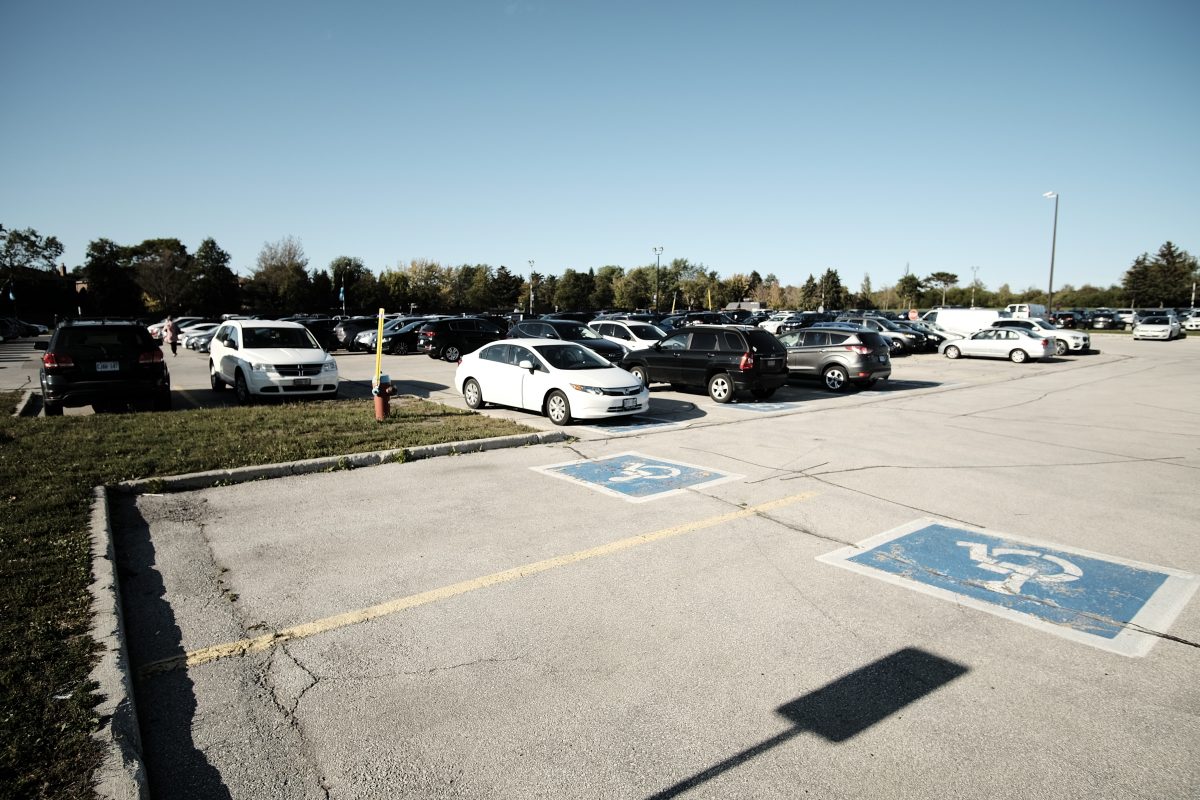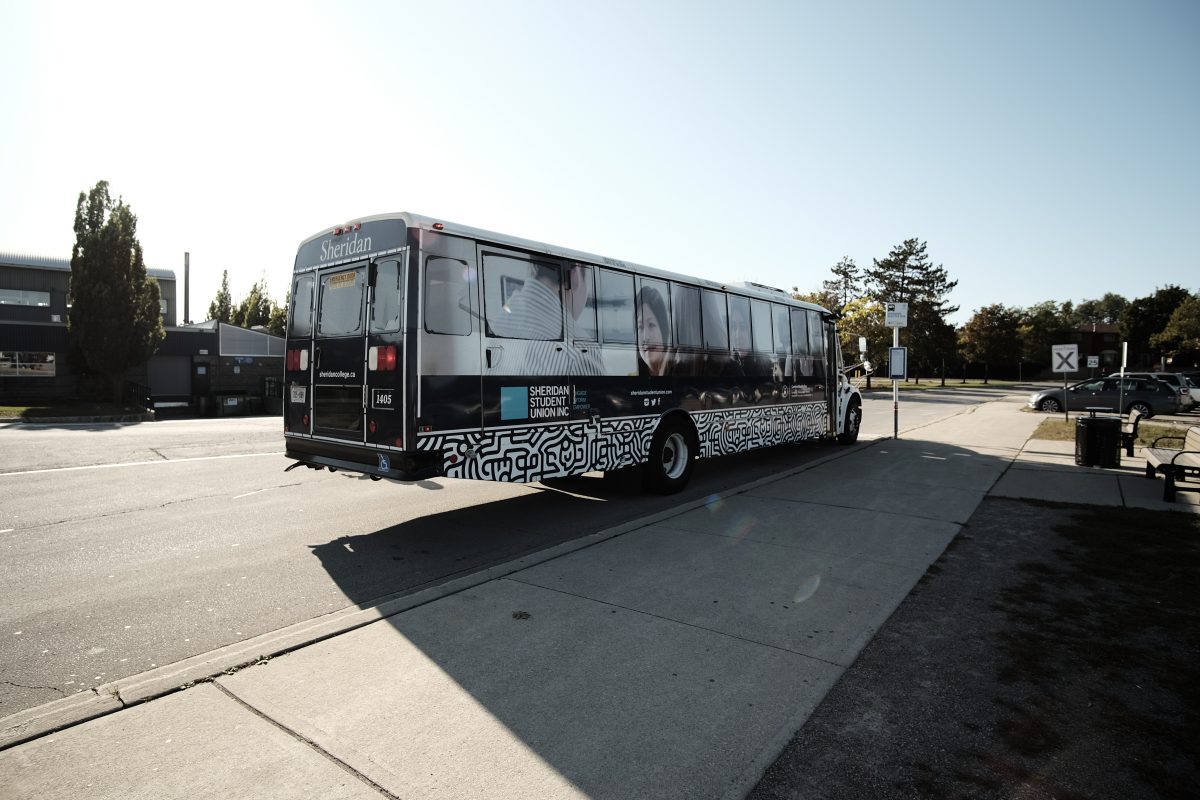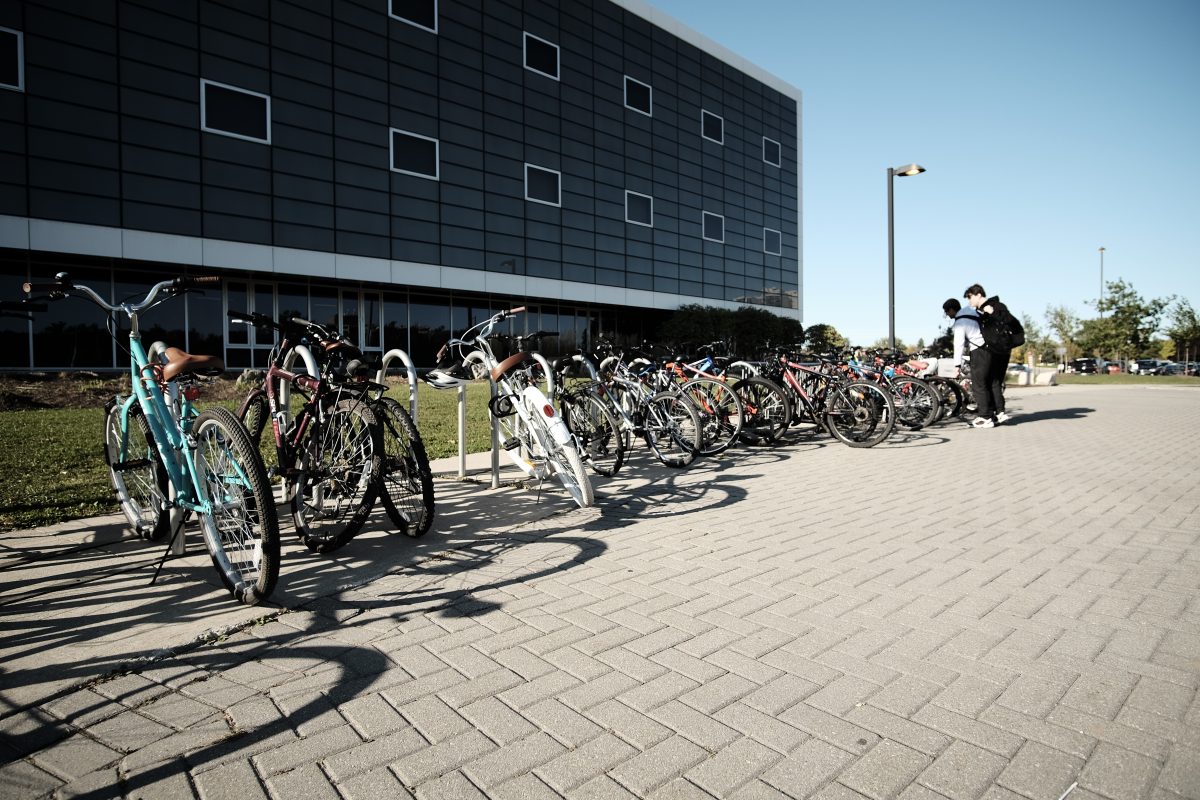How you get to class each day can make your college experience great, or make you dread getting up in the morning. Each method of getting to campus has pros and cons. In this article, we’ll go over the most popular ways to get to school to see how they stack up.
We compared driving, public transit and bicycling, in relation to what matters to students: how cheap it is, how convenient it is, and how environmentally friendly it is. The graphic gives you a quick look at our results. How we calculated the rating for each form of transportation is detailed below.

Each scenario uses the same starting location – Main St. East and Ontario St. South in Milton, Ontario, and ends at Sheridan College’s Trafalgar campus in time to make an 8:00 a.m class. Our calculations assume a student travels to and from school every day for five days a week.
Method #1 – Driving – 21.0 km, usually around 45 minutes

Driving is the most convenient and quickest ways to get around. This option lets you leave your home later than every other option, even considering things like bad weather or scheduling.
For this scenario we chose Canada’s most popular car – the Honda Civic, using 87 octane gas.
Schedule:
- Leave home at 7:15 a.m.
- Arrive at Sheridan College Trafalgar campus at 8:00 a.m.
Costs:
The average price for a used Honda Civic usually sits around $4,000. In order to pay the $4,000 off in the eight months school runs for, it would cost $125 weekly. Although insurance can change drastically depending on a variety of factors – the Canadian average for a 21-year-old is $411 a month.
Parking on campus is another expense for students looking to drive to school. An annual permit cost is $534.73. That means that weekly it costs $16.70 to park in the school parking lot.
We did the math based on the average gas cost so far this year (123.40 cents/litre) and found that gas would cost $24.90 per week, for getting to school and back only.
Total cost per week: $269.35
Pros:
- No wait times or schedules to worry about
- Fastest way to get to school
- Freedom to go where you want when you want
Cons:
- Most environmentally damaging
- Driving in traffic can be stressful
- Maintenance and unexpected car troubles can be costly
Method #2 – Public Transit

One method a lot of students use in order to get to school is public transit. Compared to driving, it takes around twice the amount of time but it is more environmentally friendly and can be less stressful than driving in traffic.
For this scenario, a student has two options to use public transit. They can either use public transit only, or use public transit to get to Sheridan College Davis Campus and then use the Sheridan Shuttle service to get to Trafalgar Campus.
Sheridan student Deep Shah commutes to school every day using the shuttle bus. He said, “I have one hour of riding on the bus to do my assignments, which I like.” He doesn’t like everything about public transit, however. Shah said, “I have to wake up at 5:30 a.m. to be at school for 8:00 a.m. and sometimes the bus is late so I just have to stand around waiting and then I’m late for class.”
Using Public Transit only – Three buses, usually takes 1:25
Schedule:
- Leave Milton GO at 6:30 a.m. on GO bus
- Arrive at Aquitaine Ave and transfer to MiWay bus at 7:02 a.m.
- Arrive at Winston Churchill Boulevard at 7:29 a.m. and transfer to Oakville Transit bus
- Arrive at Trafalgar campus at 7:55 a.m.
Cost:
One-way Presto cost is $10.56 so every day it costs $21.12.
Cost per week $105.60
Using Public Transit + Sheridan Shuttle Bus – Two busses, plus shuttle, usually takes 1:45
Schedule:
- Leave Milton GO at 5:59 a.m. on GO bus
- Arrive at Lisgar station and transfer to ZUM bus at 6:18 a.m.
- Arrive at Sheridan College Davis Campus at 6:45 a.m.
- Leave Davis campus on shuttle at 7:00 a.m.
- Arrive at Trafalgar Campus at 7:45 a.m.
Costs:
One-way presto costs $3.40 so every day it costs $6.80.
A Sheridan shuttle monthly pass is $56.50 ($14.12/week)
Cost per week = $48.12
Pros:
- Less stressful than driving
- Can be productive while commuting
- Cheaper than owning a car
Cons:
- Schedule has to line up with bus schedules and timing
- Buses can be late or unreliable
- Some buses stop operating past a certain time or have limited weekend schedules
Method #3 – Bicycling – 20.3 km, usually takes around 1:06

Riding a bicycle to class is the cheapest option available to students and the most environmentally friendly. It’s faster than walking and good for your health. However, riding a bicycle to class can be very difficult in bad weather and is only an available option if you’re willing to ride through winter.
Eric Meloche is a Sheridan student who bikes to school every day of the year. He said, “It’s really cheap and is faster than walking, so that’s nice,” but not everything is easy about biking every day. Meloche said, “The roads get a bit slippery in winter and it can be a bit much riding through traffic and snow.” He admitted that there were a few days he had to call an Uber “because it was too much.”
Surprisingly, because of rush hour traffic, bicycling only takes around twenty minutes longer than driving. It is also significantly faster than taking public transit.
Schedule:
- Leave home at 6:54 a.m.
- Arrive at Trafalgar campus at 8:00 a.m.
Costs:
The average cost of a used bicycle in good condition is around $400. Spread out over the eights months that school runs, it costs $50 a month.
Cost per week = $12.50
Pros:
- Most environmentally friendly option
- Faster than public transit and only slightly slower than driving
- Exercise has proven health benefits
- Cheapest option available
Cons:
- Can be tiring to do every day
- Can be tough in bad weather and winter
- Not all roads are suitable for bicycles, especially in winter

Great Article.